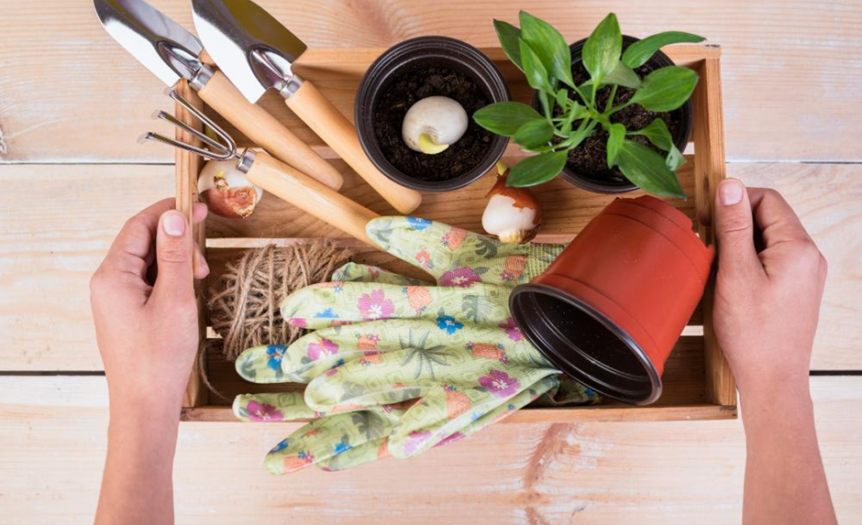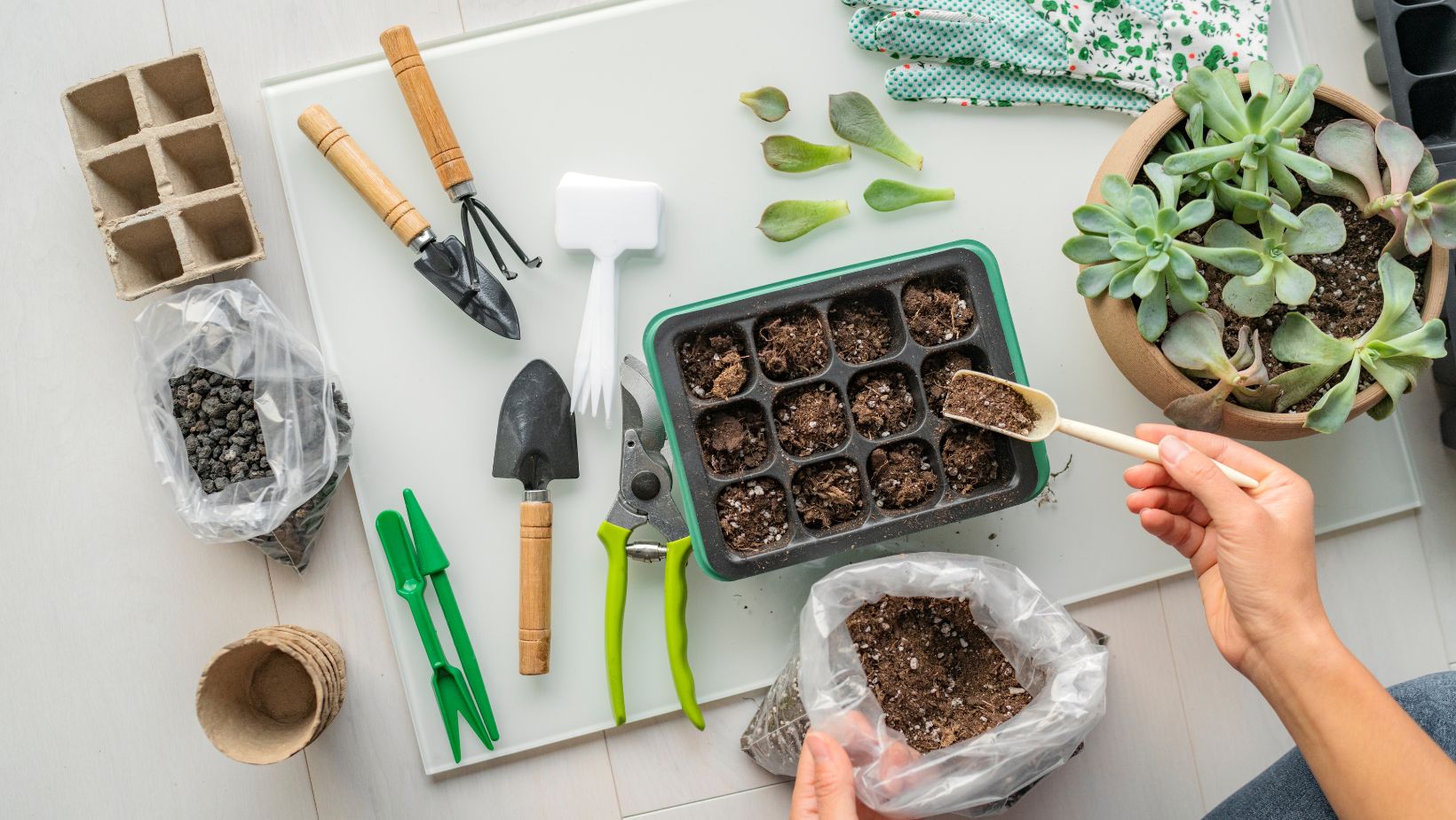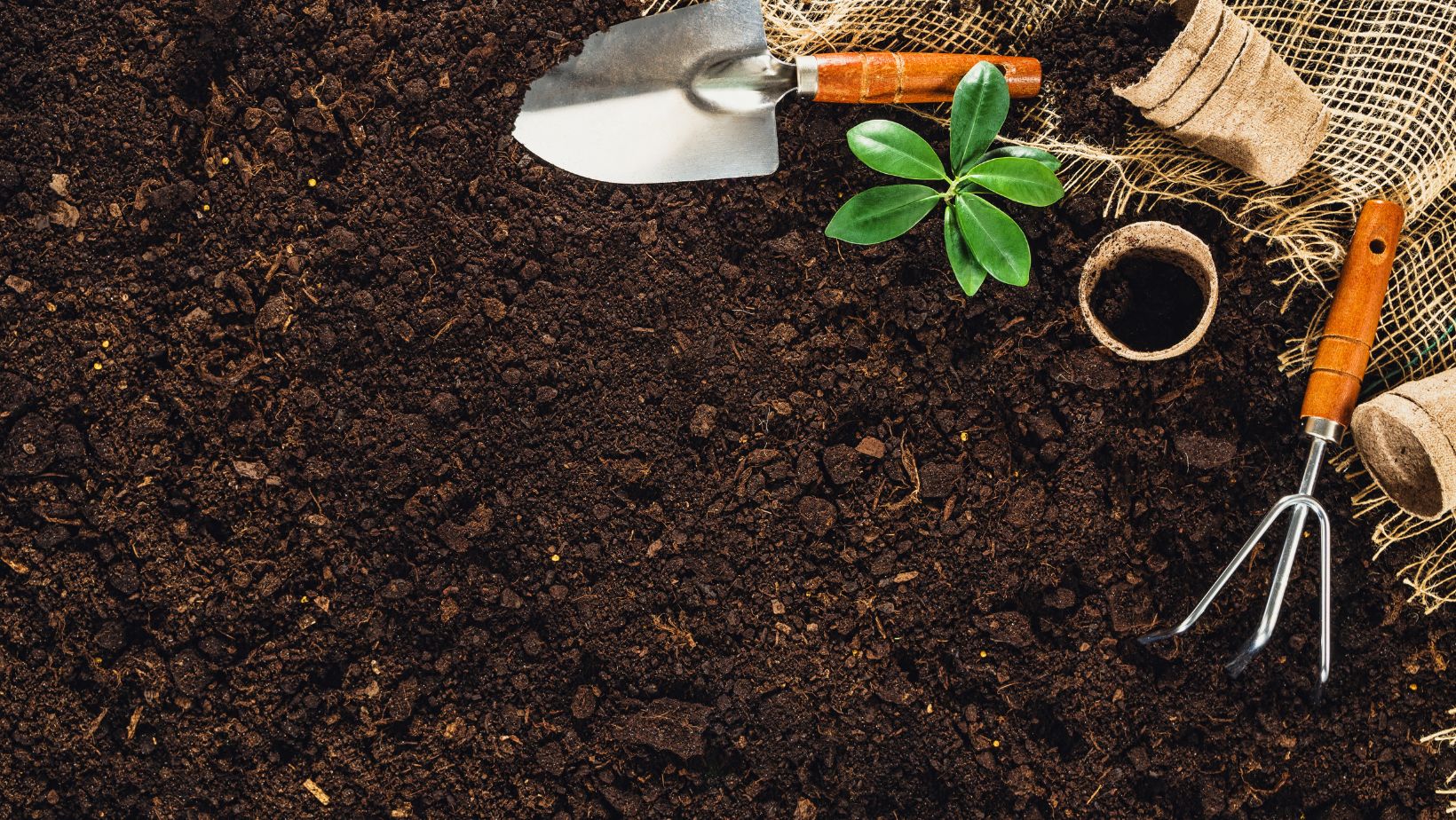Maintaining a well-organized storage system for your garden tools is crucial for their longevity and your safety. By investing time in organizing your space and learning proper storage methods, you can ensure easy accessibility and prevent injuries. Take care of your tools and enjoy a more efficient and secure gardening experience.
Prepare & Organize Tools Before Storing
Before storing your tools at the end of the gardening season or after a project, you should dedicate time to clean and organize them properly. Begin by using a hose, brush, or cleaning tools to eliminate any accumulated dirt, sap, or debris that may be clinging to them. This debris has the potential to trap moisture against the equipment, ultimately leading to the formation of rust. Once cleaned, label your instruments clearly through engraving or the use of tape/stickers, especially if you have multiple similar items. Lastly, conduct an inventory check and discard any damaged or irreparable tools. This not only creates more space but also helps to avoid accidentally using a faulty tool in the future.
When preparing tools for storage, group similar items together. For instance, you can place pruning shears with snippers and loppers. To organize them further, consider using hanging tags on storage hooks/pegs or storage drawers from DycoVentures.com for smaller items. Take the necessary precautions when handling cutting tools by covering sharp edges and sheathing blades in protective guards. This will not only prevent damage to storage bags but also reduce the risk of laceration injuries during retrieval.
Store Tools Based on Type & Use
The choice of storage method should be based on the type of tool and its frequency of use. For commonly used hand tools such as trowels, weed pullers, and small pruners, it is best to store them by hanging them vertically on a wall-mounted board or metal peg rack. Look for a rack with outlined shadows to easily identify missing tools. For stuff that is rarely used, consider placing them in bins or toolboxes on shelves. Power tools like lawnmowers and trimmers should be stored flat on a workbench or a high shelf. Remember to unplug electrical tools before storing them.
Chemicals must be stored according to strict protocols in a securely locked metal cabinet or shed, away from heat, sunlight, and water sources. Keep them elevated off the ground, properly labeled in their original containers, and organized for easy identification in case of emergencies. Prominently display emergency contact information on the nearby wall. To ensure accessibility, store the most hazardous chemicals on lower shelves, while harmless fertilizers can be stored higher up.
Storage Location & Accessibility Considerations
The primary considerations for storage space revolve around ensuring the tools remain dry, clean, and easily accessible. Choose an interior location such as a shed, garage, or basement that is not susceptible to leaks, flooding, or excessive humidity, as dampness can lead to rust over time. These spaces should promote sufficient air circulation.
Establishing well-defined organization systems with clear labels is crucial, as it allows for quick identification and retrieval of tools without the need to unpack numerous dusty bins or shelves in a state of frustration. If instruments are frequently transferred across properties, mobility becomes a factor. In such cases, modular shelving units or rolling cabinets can facilitate transportation. However, ensure that the tools are securely fastened during transit to prevent any mishaps.
Prevent Injury & Damage During Storage
It is paramount to take precautions to prevent injury when accessing stored tools. Make sure to cover sharp blades and edges with sheaths or sturdy padding like burlap sacks securely tied during storage. Power tools should be unplugged and have their batteries removed to avoid accidental activation when placing or retrieving them from storage.
For gasoline-powered equipment, empty the fuel tank beforehand to prevent the accumulation of noxious fumes. Carefully position tools instead of haphazardly tossing them, as this can lead to equipment damage. Lastly, always wear protective gloves when handling garden tools during and after storage.
Conduct Regular Maintenance While Stored
To ensure the long-term optimal performance of your garden tools, do not simply store them away indefinitely. Instead, consider scheduling regular inspections during their off-season storage to identify any signs of rust accumulation or damage. If you notice any surface oxidation, gently remove it using steel wool and apply a protective oil or lubricant to hand tool blades and other metal components that are prone to rusting.
Make sure to sharpen any dull edges and promptly replace broken handles or any other failing parts rather than delaying maintenance until you need the tool again. If possible, protect wooden handles by applying a coat of protective oil to prevent them from drying out and splintering. Take precautions against rodents by using mouse deterrents such as moth balls, as they can cause significant damage to stored tools.
By dedicating time to effectively organize, securely store, and regularly inspect your gardening tools, you can establish a well-structured and easily accessible system that safeguards your equipment and ensures its readiness for countless gardening seasons ahead. Maintaining order and safety not only prevents chaotic and risky searches for buried tools but also safeguards against issues like rust and handle deterioration, thereby prolonging the lifespan of your gardening investments. Employ these organizational techniques and storage protocols to streamline future gardening tasks, minimizing hazards and maximizing efficiency.








